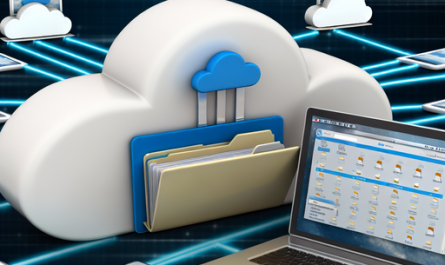Nextcloud and Ontraport: A Comprehensive Guide to Enhanced Data Management
In today’s digital age, effective data management and workflow automation are paramount for any successful
business. With the integration of Nextcloud and Ontraport, you can
achieve a streamlined system that not only enhances data storage but also optimizes business processes.
This comprehensive guide will delve into how Nextcloud and Ontraport can revolutionize your data management
strategy.
What is Nextcloud?
Nextcloud is an innovative open-source platform that allows enterprises to manage, protect,
and share data using secure, self-hosted solutions. Unlike traditional cloud services, Nextcloud gives
businesses full control over their data. This powerful tool combines efficient file storage, real-time
collaboration, and comprehensive management features into a single, cohesive environment.
- Self-hosted solutions
- Real-time collaboration
- Enhanced security protocols
Understanding Ontraport
Ontraport is a leading CRM and automation platform designed to streamline complex marketing
and sales workflows. With Ontraport, businesses can manage email campaigns, lead tracking, and customer
relationships more efficiently. By automating repetitive tasks and providing insightful analytics, Ontraport
helps businesses improve their performance and productivity.
- Advanced CRM features
- Marketing automation
- In-depth analytics
Nextcloud and Ontraport Integration
Integrating Nextcloud and Ontraport offers a powerful solution for businesses
seeking to enhance data management and workflow efficiency. This combination allows you to leverage the
strengths of both platforms—secure data storage and advanced CRM capabilities.
By connecting Nextcloud with Ontraport, businesses can automate data synchronization, streamline document
sharing, and enhance their overall operational efficiency. This guide will explore the benefits, setup
processes, and practical use cases of Nextcloud and Ontraport integration.
Benefits of Integrating Nextcloud and Ontraport
The Nextcloud and Ontraport integration offers numerous advantages for businesses, including:
1. Enhanced Data Security
Nextcloud’s self-hosted nature ensures that your data remains under your control, significantly reducing the
risk of data breaches. Combining this with Ontraport’s robust CRM capabilities, businesses can ensure that
sensitive customer information is both secure and easily accessible.
2. Streamlined Workflows
Automation is critical to modern business processes. The integration allows for the seamless flow of
information between the two platforms, reducing the need for manual data entry and minimizing the chances of
human error. This streamlines workflows and enhances productivity.
3. Improved Collaboration
Nextcloud’s collaboration tools, such as shared folders and real-time document editing, can be utilized
alongside Ontraport’s CRM capabilities to facilitate better teamwork. Teams can easily access and update
relevant documents directly from the CRM, ensuring everyone is on the same page.
4. Scalability
Both Nextcloud and Ontraport are scalable solutions that grow with your business. Whether you’re a small
business or a large enterprise, the integrated system can handle increasing data volumes and more complex
workflows without compromising performance.
Setting Up Nextcloud and Ontraport Integration
Integrating Nextcloud and Ontraport involves several steps, but the benefits far outweigh the setup effort.
Here’s a high-level overview of the process:
Step 1: Install and Configure Nextcloud
The first step is to ensure you have Nextcloud installed and configured correctly. This involves setting up
your server, ensuring all security protocols are in place, and familiarizing yourself with Nextcloud’s
features and interface.
Step 2: Set Up Ontraport
Next, you need to set up your Ontraport account. This includes configuring your CRM settings, defining your
marketing and sales workflows, and integrating your email and communication tools.
Step 3: Choose Integration Method
Decide on the best method to integrate Nextcloud and Ontraport. This could involve using third-party
integration tools, developing custom APIs, or leveraging built-in features of both platforms. Research
available options to find the one that best fits your business needs.
Step 4: Configure Synchronization
Once you’ve chosen your integration method, configure data synchronization between Nextcloud and Ontraport.
This ensures that any changes made in one platform are automatically reflected in the other, maintaining
data consistency and accuracy.
Step 5: Test and Optimize
Finally, thoroughly test the integrated system to ensure everything works as expected. Identify any
bottlenecks or issues and optimize your configuration to ensure seamless operation. Regularly review and
update your setup as needed to adapt to evolving business requirements.
Practical Use Cases of Nextcloud and Ontraport Integration
The integration of Nextcloud and Ontraport can be applied in various business scenarios. Here are some
practical use cases:
1. Customer Data Management
By integrating Nextcloud with Ontraport, customer data can be securely stored and easily accessed. Sales
teams can pull up relevant customer documents directly from the CRM during client interactions, enhancing
engagement and effectiveness.
2. Marketing Campaigns
Marketing teams can use the integrated system to manage and share campaign materials. Nextcloud’s secure
storage ensures that sensitive marketing data remains protected, while Ontraport’s automation features allow
for efficient campaign execution.
3. Document Collaboration
Teams can collaborate on documents in real-time using Nextcloud, and the updates are instantly reflected in
Ontraport’s CRM. This ensures that everyone is working with the most up-to-date information, improving
accuracy and collaboration.
Best Practices for Using Nextcloud and Ontraport
To maximize the benefits of integrating Nextcloud and Ontraport, follow these best practices:
1. Regular Backups
Regularly back up your data to avoid loss during integration updates or system failures. Utilize Nextcloud’s
backup features to ensure data integrity.
2. Monitor Integration Performance
Regularly monitor the performance of your integrated system to identify any issues early. Use analytics tools
provided by Ontraport to measure efficiency and make necessary adjustments.
3. Train Your Team
Ensure that your team is adequately trained on using both Nextcloud and Ontraport. Provide resources and
support to help them understand how to efficiently use the integrated system.
4. Keep Software Updated
Regularly update both Nextcloud and Ontraport to the latest versions. This ensures you have access to new
features, performance improvements, and security patches.
Conclusion
The integration of Nextcloud and Ontraport offers a powerful solution for enhancing data
management and improving business workflows. By combining Nextcloud’s secure storage and real-time
collaboration capabilities with Ontraport’s advanced CRM and marketing automation features, businesses can
achieve greater efficiency and productivity.
Whether managing customer data, executing marketing campaigns, or facilitating document collaboration, the
integrated system provides a seamless experience that caters to the needs of modern businesses. By following
the setup steps and best practices outlined in this guide, you can transform your data management strategy
with Nextcloud and Ontraport.



